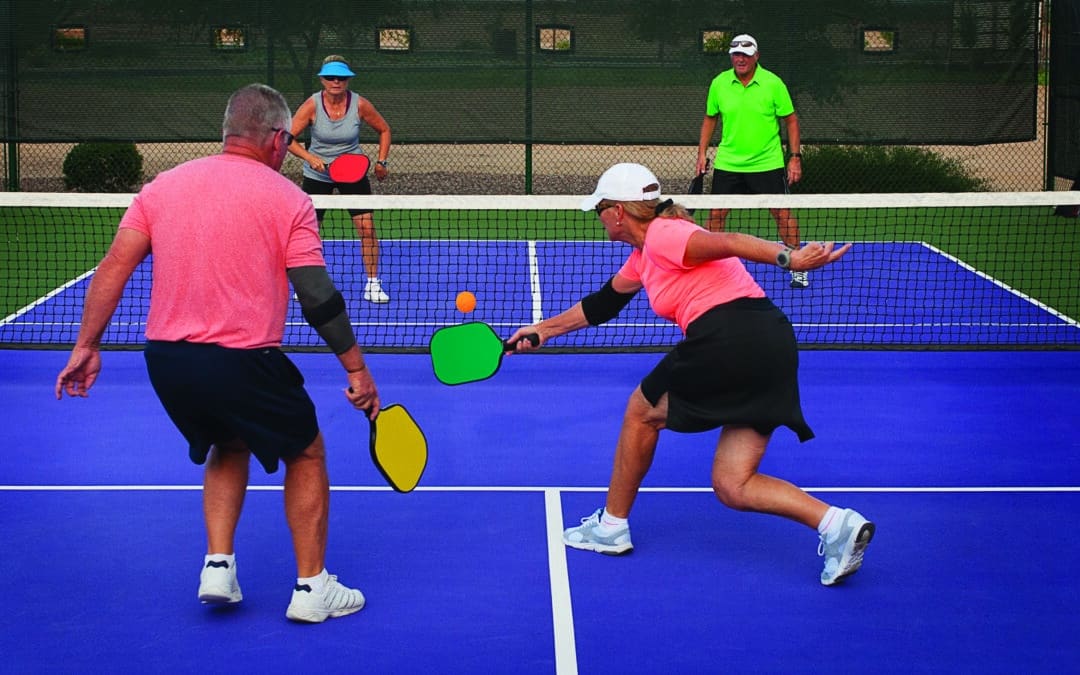
by Specialdocs Consultants | Jul 8, 2022 | Healthy Aging, Patient News, Staying Active
Try Pickleball, the Country’s Fastest-Growing Sport
Tired of the same ‘ole routine every summer but find yourself in a pickle and looking for a new summer activity? Well, according to American Council on Exercise (ACE), you might want to consider pickleball.
As everyone from your next-door neighbor to ACE will attest, pickleball is extraordinarily popular. Its rapid rise to ubiquity can be attributed to a number of factors, ranging from easily learned rules and minimal equipment needs to intergenerational appeal and abundant opportunities for socializing.
This blend of badminton, tennis and table tennis can be adjusted to suit the intensity and competitiveness of the players, making it simple enough for beginners but fast-paced enough for more fit or skilled participants.
All of which is to say that if you haven’t yet considered picking up a pickleball paddle and the light, whiffle-like plastic ball, summer 2022 might be the perfect time to do so.
“Pickleball doesn’t require the skill of tennis, so it is easily adapted by most, and provides all the benefits of movement, including calorie burning and enhanced functional capabilities,” says Dr. Cedric Bryant, ACE president and chief science officer.
Already a favorite sport in retirement communities, pickleball has swelled to include more than 4.8 million players in the U.S. – almost double the number from five years ago – earning it the title of fastest-growing sport in 2021 and 2022. According to the Sports and Fitness Industry Association, the spike has been fueled by people ages 54 and younger looking for a friendly yet competitive and lively sport.
“People who play are generally having so much fun they don’t realize how much exercise they’re actually getting,” says Laura Gainor, spokesperson for the USA Pickleball Association.
At 44 x 20 feet, the pickleball court is one quarter the size of a tennis court, so it’s easier to keep the ball in play and achieve a brisk workout. According to ACE, pickleball may provide just what many middle-aged and senior adults are seeking – a safe and effective workout that yields long-term benefits and encourages lifelong participation.
A small research study recently conducted by the organization among people ages 40 to 85 showed that playing four 15-minute pickleball matches three days each week meets exercise intensity guidelines for improving and maintaining cardiorespiratory fitness. Study authors reported the positive impact on cardiometabolic risk factors, with participants experiencing favorable changes in cholesterol levels, systolic and diastolic blood pressure, and peak oxygen uptake after six weeks.
The smaller court also benefits older people or those who have problems with their joints, because less running is needed, resulting in less wear and tear on the joints. One cautionary note: Experts advise learning proper technique to prevent falls. As always, be sure to check with your healthcare provider before beginning any new physical activity.
“Take a few lessons to get started, and you’ll quickly ramp up,” assures Gainor. “After three to five games, you’ll have a very good understanding of how to play, and will become addicted to it shortly after!”
Take It Outside: Keep Moving This Summer
There’s no one-sport-fits-all approach, so if pickleball doesn’t appeal, find your inspiration in one of these activities, spanning the spectrum from low exertion to highly energetic:
- Stroll through farmers’ markets or art fairs
- Go produce picking at a local orchard
- Forest bathe – immerse yourself in nature at a forest preserve
- Gardening – remember to bend from your knees and waist rather than your back
- Swim – use a variety of strokes to limber up your whole body
- Disc golf – a low-impact way to challenge your coordination
- Yard yoga – take your mat and routine outdoors
- Hike, jog, run or cycle on an outdoor trail
- Kayaking – for a vigorous upper body workout
- Stand-up paddleboarding or Boga – challenging, board-based water workouts
Sources: American Council on Exercise, American Heart Association, USA Pickleball Association

by Specialdocs Consultants | Apr 1, 2022 | Patient News, Staying Active, Wellness
Get Up and Join the Movement
As we emerge from the doldrums of winter hibernation and COVID-19-related inertia, it’s important to remember that exercise is good medicine and there’s no better time than now, to get moving again.
“There isn’t a chronic condition that can’t be better managed with an appropriate dose of exercise,” asserts Dr. Cedric Bryant*, President and Chief Science Officer at the American Council on Exercise. “This requires good interaction with your physician, an ability to listen smartly to your body and the realization that some exercise is always better than none.”
He recommends fostering good muscular fitness and enhancing strength, flexibility and balance with the exercise routine shown below. The 15-minute investment of time needed to complete one set of 8 to 15 repetitions for each exercise provides beginners with “the minimum effective dose needed to elicit a very positive response,” says Dr. Bryant.
Add regular rounds of exercise that build endurance, helping improve the health of your heart, lungs and circulatory system. To achieve the best results, you should have enough breath to talk but not enough to sing during aerobic activities such as brisk walking or jogging, dancing, biking, swimming, climbing stairs, or playing basketball, tennis or the uber-popular pickleball. (Learn more about today’s fastest-growing sport in an upcoming newsletter.) Be sure and check with your healthcare provider before beginning an exercise program.
Dr. Bryant’s Essential Seven
 1. Pushups
1. Pushups
Benefits: Develop the large muscles of the chest and the back of arms
The basic incline pushup is done using a sturdy table or other solid surface about 3 feet high. Stand facing the table and place your hands on the edge (shoulder width apart) arms straight and elbows not locked. Walk your feet backward until your arms and body are in a straight line. Bend elbows and slowly lower chest to the edge of the table while inhaling. Keep body straight and rigid throughout the movement. Push body away from the table until elbows are extended but not locked. Exhale as you push up.
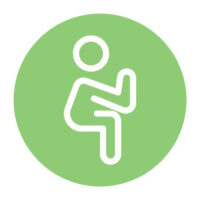 2. Bodyweight Squat
2. Bodyweight Squat
Benefits: Strengthens and tones the lower body
Stand with your feet slightly more than hip width apart, toes turned slightly outward, hands at sides with palms facing in. Pull shoulders down and back. Stiffen your core and abdominal muscles. Hold chest up and out, tilt head slightly up, shift weight back onto your heels while pushing hips toward the wall behind you.
Downward phase: Shift hips back then down to create a hinge-like movement at hips and knees. Try to control the amount of forward movement of the shinbones. Maintain tension in the core muscles and keep your back straight. Lower yourself until thighs are parallel or almost parallel with the floor. DO NOT go deep enough to cause pain. Make sure your feet don’t move, ankles don’t collapse in or out, knees remain aligned over the second toe, and body weight is evenly distributed between balls and heels of the feet.
Upward phase: Extend the hips and knees by pushing your feet into the floor. Hips and torso should rise together while heels are flat on floor and knees are aligned over the second toe. Continue extending until you reach the starting position.
Remember to inhale on the way down and exhale on the way back up.
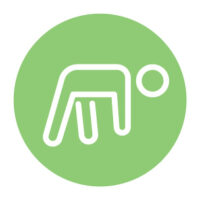 3. Bent-Over Row
3. Bent-Over Row
Benefits: Targets muscles in the upper and middle back and improves stability of the spine
Holding a small weight in each hand and standing with feet hip-distance apart, bend at the waist. Your back should be parallel to the floor with a neutral, not rounded, spine. Extend arms toward floor, keeping knees slightly bent. Engage abs and squeeze shoulder blades together as you bend elbows back and bring weights to your torso. Keep arms close to your torso. Slowly lower the weights back to the starting position.
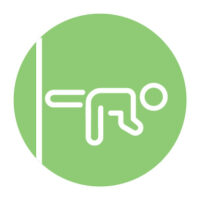 4. Modified Single-Leg Deadlift
4. Modified Single-Leg Deadlift
Benefits: Strengthens and tones gluteals and helps improve balance
Position yourself by a wall or chair. Stand straight, with feet aligned with hips, and shift weight to right leg. Slowly bend forward at the waist while raising your left leg behind you until your torso and leg are both parallel to the floor. Keep your head up and arms straight, perpendicular to the floor. Lower your leg as you return to an upright position. Keep your leg straight at all times. Repeat all reps on one side, then switch legs.
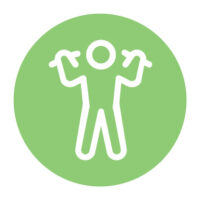 5. Overhead Front Press
5. Overhead Front Press
Benefits: Increases shoulder strength and engages the core for stability
Stand upright and keep the back straight. Note: Beginners or those with back issues can perform this exercise seated. Hold a small weight in each hand at the shoulders, with an overhand grip. Thumbs are on the inside and knuckles face up. Exhale as you raise the weights above the head in a controlled motion. Pause briefly at the top of the motion. Inhale and return the weights to your shoulders.
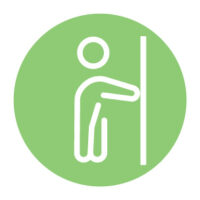 6. Calf Raises
6. Calf Raises
Benefits: Strengthen lower leg muscles, increase stability, balance and agility
Start by standing 6 to 12 inches away from a wall, facing it, with feet hip width apart. Extend arms to place your palms on the wall, level with chest or shoulders. Exhale and slowly lift heels off the floor, keeping knees extended without rotating your feet. Use your hands on the wall to support your body. Hold raised position briefly. Inhale and slowly lower heels back to the floor.
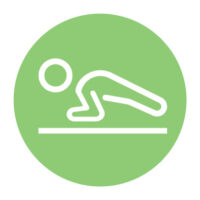 7. Plank Pose
7. Plank Pose
Benefits: Strengthens the core and abdominals while increasing stability and balance
Modified version: Start in tabletop position with hands and knees on the floor. Walk your hands so your forearms and palms are facing down, keep shoulders and elbows aligned. Walk your knees away from your body until you feel your core and abdominals engaged. Keep torso straight and rigid, your body in a straight line from ears to knees with no sagging or bending, and with shoulders down, not creeping up toward your ears. You may keep your toes on the floor for extra support. Hold position for 10 seconds. Walk your knees back in, repeat. Over time, work up to 30, 45 or 60 seconds.
Sources/refer to these websites for more detailed descriptions on the exercises: American Council on Exercise, Verywell Fit, Women’s Health
*As President and Chief Science Officer at the American Council on Exercise, Cedric X. Bryant, PH.D and Fellow of the American College of Sports Medicine, stewards the organization’s exercise-science and behavior-change education. He earned both his doctorate in physiology and master’s degree in exercise science from Pennsylvania State University, where he received the Penn State Alumni Fellow Award, the school’s highest alumni honor.
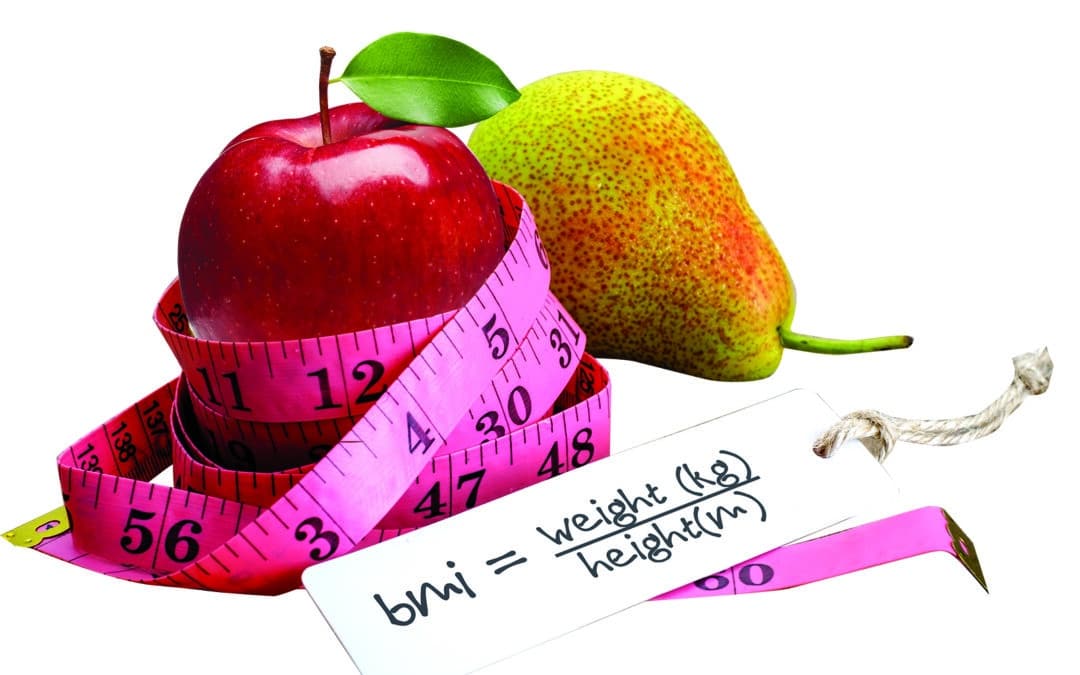
by Specialdocs Consultants | Apr 1, 2022 | Medical Tests, Patient News, Staying Active, Wellness
Definitive Diagnostic Tool or Part of a Greater Health Matrix?
It’s an easily understood calculation: Body Mass Index, popularly known as BMI, computes an individual’s measure of body fat as weight in kilograms divided by height in meters squared. Levels are defined as Underweight if less than 18.5, Normal weight if between 18.5 and 24.9, Overweight if between 25.0 and 29.9, and Obese if above 30. But what does BMI really tell us?
This simple formula has nonetheless sparked controversy and continued questioning: Is BMI a quick, easy and efficient way to identify weight problems and associated risk of disease in adults? Or is it an inaccurate measure because it doesn’t consider body composition, age, sex or ethnicity?
Years of debate, research and analysis now point to using BMI in a more nuanced way, suggesting that it is best employed as just one part of an initial health screening for individuals, and not as a diagnostic tool. Much more meaningful is how BMI fits with other essential measures of an individual’s health — blood pressure, blood sugar, cholesterol levels, heart rate, inflammation, physical activity, diet, cigarette smoking and family history.
Looking at BMI alone can be misleading when you consider that:
- Women tend to have more body fat than men.
- Older adults have more body fat than younger ones. Aging is associated with an unhealthy increase in body fat and an associated increased risk for prediabetes and type 2 diabetes.
- At the same BMI, the metabolic risks for people of Asian descent are higher than for Caucasians.
- People who engage in strength training two or more times per week have higher lean muscle mass than nonathletes, which can result in a higher BMI but not necessarily a higher risk of disease.
Additionally, knowing where the fat is distributed is essential in determining disease risk. The pear shape associated with women means subcutaneous fat around the hips, thighs and buttocks; more dangerous is the apple shape, which indicates visceral fat in the abdomen (waist circumference of more than 40 inches for men or more than 35 inches for nonpregnant women), which is linked to higher risk of heart disease and type 2 diabetes.
An influential study published in Nature further revealed the flaws in categorizing people as “unhealthy” or “healthy” based on BMI alone. The authors found that more than 74 million American adults were miscategorized. Nearly half of people considered overweight and 29% of those categorized as obese were actually metabolically healthy, with normal blood pressure, cholesterol and blood glucose levels. Meanwhile, 30% of those considered “normal weight” had metabolic or heart issues.
The origins of BMI help explain its limitations. In the 1830s Belgian mathematician Lambert Adolphe Jacques Quetelet developed a test intended to identify the “l’homme moyen,” or the “average man,” by taking the measurements of thousands of Western European men and comparing them to find the ideal weight. More than a century later, American physiologist and dietician Ancel Keys promoted Quetelet’s Index as the best available way to quickly screen for obesity, identifying certain BMI ranges as associated with greater risk of disease and poor health outcomes. However, like Quetelet, Keys didn’t account for different body types or ethnicities.
One other point to consider: While more intrusive and not as commonly available, methods such as measuring skinfold thicknesses, bioelectrical impedance, underwater weighing, abdominal CT scans (for visceral fat) and dual-energy X-ray absorption are more accurate than BMI for estimating body fat.
So is BMI still meaningful?
As a discussion point, or as one tool used in combination with other assessments of metabolic and skeletal health, it can be useful.
Most importantly, body fat is just one of many factors considered when evaluating individual health and risk of disease.
We encourage you to call your healthcare provider to discuss your personal wellness profile.

by lduque | Dec 15, 2021 | Patient News, Staying Active, Wellness
How to Replace Bad Habits with Healthy, Sustainable Behaviors
For entrepreneur physician Kyra Bobinet, MD, the typical reasons behind a failed diet served as the impetus for developing a novel approach to behavior change.
“I was doing so well. I knew what to eat, when to eat, how to eat, and then I just stopped doing it…and I don’t know why.”
Her answer to a patient’s familiar lament above, called the Iterative MindsetTM, is now used by the U.S. Centers for Disease Control and Prevention (CDC) to enhance its diabetes prevention program.
Drawing on her neuroscience and medical training at the UCSF School of Medicine and Harvard T.H. Chan School of Public Health, Bobinet conducted years of field research aimed at eliminating the inevitable gap between intention and action. What she discovered was a way to change even the most intractable bad habits and permanently replace them with healthy, sustainable ones.
The Iterative Mindset, Bobinet asserts, is the key to people who succeed despite seemingly insurmountable odds. In her early work helping frontline Walmart employees manage conditions such as obesity, cardiac disease and diabetes, she observed that only a small percentage of people were able to achieve the necessary lifestyle changes. Notably, they faced every possible headwind of financial and social stress – single parenting, senior caregiving, food insecurity and lack of healthcare access.
“Nonetheless, they somehow were able to lose weight, get off their medications, and dramatically improve their health,” she recounts. “We looked and looked, but the only common link between them was the Iterative Mindset, a resilient way of approaching behavior change like an experiment – with curiosity, innovation and no failure or blame if it doesn’t work out as planned.”
It’s a stark contrast with the way most people view their failure to change longstanding habits. Bobinet describes why: “The habenula, a recently characterized area of the thalamus, has two functions – detecting failure and then, if you think you failed, suppressing your motivation to keep trying. By activating whenever you believe you’ve failed to reach a goal, the habenula places you in a state of learned helplessness, associated with higher depression and low self-efficacy. This is when most people give up and bad choices ensue.”
She posits that those who form new habits by continually trying again in different ways, or iterating, are able to bypass that switch in the brain. An iterative mindset can succeed where the performance mindset, used for SMART (specific, measurable, achievable, relevant, time-based) goals or tracking steps with wearable devices, sometimes cannot.
“Performance mindset works well to motivate for tasks that are short-lived, and for optimization, such as athletes who have already experienced a substantial success and want to strive for the next level,” says Bobinet. “However, it can be detrimental when used to modify behaviors in more vulnerable people, setting them up for an eventual win or lose situation that triggers feelings of failure and causes loss of motivation to keep trying.”
True change only happens when a new behavior turns into a habit, repeated so frequently it grows to be automatic, and by definition becomes part of your lifestyle, says Bobinet. The process can take up to two years, with multiple relapses an expected part of the process.
“It’s completely natural to relapse when you’re stressed or distracted; it’s how fast you get back in motion that counts. And you cannot fail as long as you iterate,” emphasizes Bobinet. “Don’t blame yourself, blame what you tried—it wasn’t the right thing right now. Think of it as an experiment that needs tweaking and continue to version until you find the right fit for you.”
If you’re interested in trying this mindset approach to behavior change, Dr. Bobinet offers a free basic Fresh Tri app through the Apple App Store and Google Play.
by Specialdocs Consultants, LLC | Jan 1, 2021 | Patient News, Staying Active, Wellness

A Winter Workout Routine Will Prepare You For Life After COVID
Exercise will reduce pain, improve function and mobility, lower blood pressure and blood sugar, decrease risk of chronic illness and death from heart disease and many forms of cancer, enhance mood and focus, and may even help reduce your risk of contracting COVID-19.
Despite those compelling benefits, only 5% of us stick to an exercise regimen. With months of staying close to home base ahead, we asked national exercise expert Dr. Josh D’Angelo, PT, of MovementX to help us beat the odds and emerge from our winter cocoons fitter, stronger and more limber than before.
“Recent research has shown that even a little bit of exercise and movement is beneficial in improving your movement, health and life,” says Dr. D’Angelo. “We start with a focus on functional strength training exercises because it provides the best protection against future injury and helps with everything from mobility to balance. To maximize your gains, we encourage supplementing with 15-20 minutes of aerobic exercise, such as walking briskly, riding a stationary bike, dancing … or anything that gets you moving and you enjoy! And remember, every little bit of movement helps.”
Following are some ways to get started, from MovementX’s “AgeProof Your Body” program:
Work toward repeating three complete sets of these fundamental exercises: squats, pushups and abdominal strengthening for your core. Start with 5-8 repetitions each, and build weekly. Rest, repeat.
- Squats. Focusing on lower body and core strength, this is one of the most functional activities and will also get your heart rate going. Proper mechanics are important.
-
- Stand up straight, feet shoulder width apart.
- Slowly bend knees and drop your hips backward to sit in chair. Rise and repeat.
- Pro Tip: Push energy down in your heels and into the midfoot – you should be able to wiggle your toes, and you should not feel discomfort in your knees or back.
- Advanced: Add load (dumbbells or household objects) or vary your speed as your strength and endurance improve. Adding repetitions can also increase the challenge
- Pushups. These are challenging, but start with this beginner position and perform 5-8 repetitions until you can advance to a lower position and more reps.
-
- Start by standing 18-24 inches away from a wall. Extend your arms and place your hands on the wall, shoulder width apart. Lean toward the wall, keeping your arms straight
- Bend your elbows, allowing your body to come closer to the wall – let your chest lead, and keep your body straight.
- Push away. You should feel this in your chest, shoulders and core.
- Advanced: How low can you go? As you progress with the wall pushup, start with your feet farther away from the wall. Even lower? Position your hands on a sturdy chair for a lower incline. Lower? Go to the floor on your mat, starting with your knees set on the floor. The lowest is going for the full pushup position with only your hands and toes touching the floor.
- Abdominals Series. Core strength is key to developing functional fitness that helps prevent injuries, reduce back pain and make your daily activities easier to accomplish.
- Setup: Lie on your back with knees bent, feet on floor, and arms by your sides. Your lower back should not be arched at all during this exercise; push it down into the floor to tighten abs.
- Slowly bring knees up toward your chest as you bend your elbows to let your hands meet your knees (at the edge of the thigh).
- Push your hands into your thigh just where it meets your knee, pressing your hands up and toward the ceiling. Continue to do this for 20 seconds. Make sure to breathe! Work your way up to holding for 30 seconds.
The post Start 2021 off Right by Sticking to your Winter Exercise Plan appeared first on Specialdocs Consultants.
by Ivan | Jul 9, 2019 | Patient News, Staying Active, Wellness

Wake-up Call: Fighting Fatigue at Its Roots
Feel like you are fighting fatigue throughout the day, the joy in life slowly diminishing and your active lifestyle becoming a distant memory? Are these ordinary signs of aging?
No, no and no!
Feeling tired all the time is not a normal part of the aging process. Instead, it can point to the need for a better night’s sleep, stress or an underlying illness, or be the result of a mix of common medications. Or it may be a combination of all these things. Identifying the possible sources of your fatigue is the most important step in reenergizing your lifestyle.
Medical: Visit your physician to rule out these frequently seen causes of tiredness.
Emotional health: Low-grade depression, anxiety or chronic stress can sap energy.
Anemia: This condition occurs when your blood has too few red blood cells or those cells have too little hemoglobin, a protein that transports oxygen through the bloodstream. If untreated, anemia results in a drop in energy levels.
Heart disease: When the heart pumps blood less efficiently, it can lead to fluid in the lungs, causing shortness of breath and reducing the oxygen supply to heart and lungs.
Hypothyroidism : An underactive thyroid gland can cause fatigue – along with other symptoms, such as weight gain, weakness, dry skin, feeling cold and constipation.
Medications : Many medicines can cause fatigue, including blood pressure drugs, antidepressants, anti-anxiety drugs and antihistamines.
Lifestyle Habits
Sleep: Quality, quantity and environment matter greatly in ensuring a healthy sleep, but these factors are surprisingly misconstrued. According to NYU School of Medicine, dispelling these widely held beliefs is key:
- Myth: “Alcohol before bed is good for sleeping.” A nightcap before bed may help you fall asleep but will dramatically reduce the quality of sleep by disrupting the REM (rapid eye movement) stage all night, and you’ll wake unrefreshed.
- Myth: “Many adults need only five hours of sleep or less, especially as they get older.” The reality is everyone needs to get enough sleep to wake up feeling refreshed. The average is seven to eight hours nightly to allow the body to progress through four phases of restorative sleep, including deep sleep cycles of REM and delta waves sleep, which are important for generating neurons, repairing muscle and restoring the immune system.
- Myth: “Watching TV in bed before sleep is a good way to relax.” Actually, turning off the TV and putting away electronic devices at least two hours before bedtime is recommended, as the blue light produced affects the release of melatonin, the sleep hormone, and will delay slumber.
- Myth: “If I wake up in the middle of the night, it is best to lie in bed until I fall back asleep.” Tossing and turning for more than 20 minutes is not helpful; instead, change rooms and engage in something mindless, like folding socks. Do not watch TV or look at electronic devices, as this wakes up your brain.
- Myth: “Snoring is a common, harmless problem.” Snoring can be a sign of sleep apnea, a disorder characterized by decreased or complete lack of airflow throughout the night. Over time, this can increase the risk of cardiovascular disease if untreated.
- Myth: “Falling asleep anywhere, anytime is the sign of a good sleeper.” It’s just the opposite, indicating a sleep “debt” from insufficient rest or a sleep disorder such as narcolepsy or sleep apnea.
Under- or over-activity: Sedentary days and nights can cause loss of muscle mass and flexibility and make even moderately intense activities seem exhausting. However, exercising at a very high intensity can also cause fatigue.
An Infusion of Energy for Chronic Fatigue Research

Far beyond ordinary tiredness is the profound fatigue known as myalgic encephalomyelitis/ chronic fatigue syndrome (ME/CFS), which has puzzled and frustrated medical professionals for decades. No cure or approved treatment is available to its 2.5 million sufferers, only a management of symptoms worsened by any type of physical, cognitive or emotional effort. But a sea change is underway. It began in 2015 with a new name recommendation by the Institute of Medicine (IOM): Systemic Exertion Intolerance Disease (SEID). Noting that the term chronic fatigue syndrome can trivialize the seriousness of the condition and that “ME” is inappropriate because neither muscle pain nor brain inflammation has proven to be a symptom, the IOM panel stated: “SEID captures a central characteristic of this disease – that exertion of any sort can adversely affect patients in many organ systems and in many aspects of their lives.”
Even more promising is the significant investment in research announced by the National Institutes of Health (NIH). Up to $36 million over five years has been granted to shine a brighter light on the origins and progression of chronic fatigue and ultimately to help develop diagnostic markers and effective treatments for fighting fatigue.
Did You Know?
58% of older adults sleep less than seven hours a night.
80% of people age 55 and over report unintentionally falling asleep at least once during the day within the last month.
Source: Centers for Disease Control and Prevention
The post Fighting Fatigue appeared first on Specialdocs Consultants.



 1.
1.  2.
2.  3.
3.  4.
4.  5.
5.  6.
6.  7.
7. 


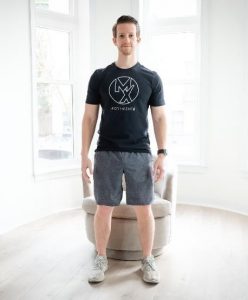
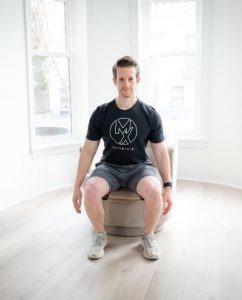
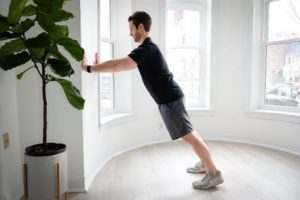
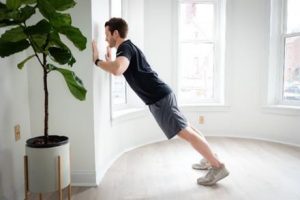

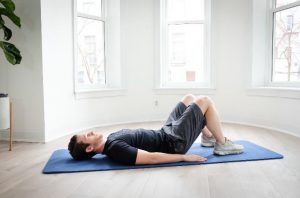
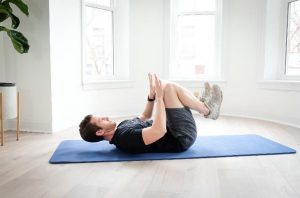


Recent Comments